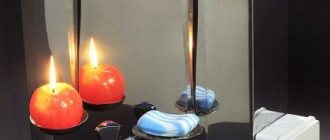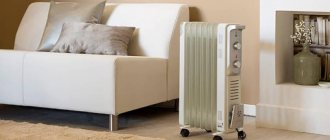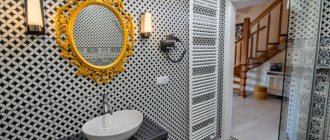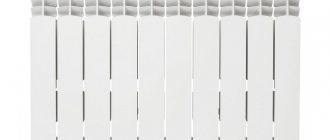| Place | Name | Characteristics in the rating |
| The best single-phase single-tariff meters |
| 1 | Typeit NEVA 103 1S0 | Buyer's Best Choice |
| 2 | Energy meter CE 101 S6 | Favorable price-quality ratio |
| 3 | Incotex Mercury 201.8 | The most modern single-phase meter |
| 4 | Lenelectro LE 111.1.D0 | The most affordable price. Resistance to electromagnetic fields |
| 5 | LEMZ CE2726-SOLO G05 | Traditional design with standard pinout |
| The best single-phase multi-tariff meters |
| 1 | Incotex Mercury 200.02 | Fast self-sufficiency |
| 2 | Abb FbВ 11205-108 | The best two-tariff meter |
| 3 | Energy meter CE102 S7 | The most affordable multi-tariff meter |
| 4 | Lenelectro LE 221.1.R2.Р2.5 | Best price |
| 5 | PZIP TsE272 | Compact sizes. Economical |
| The best three-phase meters |
| 1 | Incotex Mercury 230 ART-01 CN | The most versatile counter |
| 2 | PZIP TsE2727A-E4-S.E4.OP | Optimal functionality. Several degrees of protection |
| 3 | Energy meter CE300 R31 145-J | Optimal combination of price and properties |
| 4 | Taypit Neva 303 | Best price |
| 5 | Matrix NP73E.1-11-1 | The most high-tech and secure metering device |
An important role in the comfort of an apartment or country house is played by a regular electricity meter, without which not a single residential or industrial facility can do. Along with reliability, this device requires high metering accuracy, especially with a two-tariff connection.
All electricity metering devices can be divided into two groups.
- Household devices are installed in private houses, apartments, cottages, and garages. Most often, the owners of this property consume a small amount of electricity using low-power household appliances. In such cases, the simplest and most affordable models are suitable, which do not raise questions from representatives of energy supervision. But there is no point in buying outdated induction meters, the operation of which can be interfered with using a magnet.
- For industrial purposes, completely different devices are required. First of all, they are designed to work in a three-phase power supply. They are also subject to such requirements as the possibility of multi-tariff metering, high accuracy, and the ability to integrate into automated systems of power engineers.
This review presents the best three- and single-phase meters, which are widely represented on the Russian market. The rating position of each model was influenced by factors such as reliability, measurement accuracy, ease of use, cost of the device, etc. The opinions of users and specialists in the maintenance of household and industrial electrical networks with practical experience in using equipment of a certain brand were also taken into account.
Current tariffs (using the example of Moscow and the Moscow region)
The amount of payment for electricity for two-tariff meters depends on three factors - the type of slabs in a multi-storey building, the time of day, month of the year, and the region. Let's look at the main options.
Multi-storey buildings with apartments with gas stoves
- In the period from January 1 to June 30, the night and day zone tariffs for Moscow are 1.79 and 6.19 rubles, and for New Moscow - 2.24 and 6.03 rubles, respectively.
- During the period from July 1 to the end of 2021, the following tariffs apply at night and daytime: 1.92 and 6.19 for Moscow and 2.41 and 6.19 for New Moscow.
Multi-storey buildings with electric stoves
- From January 1 to June 30, the night and day zone tariffs for Moscow are 1.26 and 4.65 rubles, and for New Moscow - 1.58 and 4.41 rubles, respectively.
- From July 1 until the end of 2021, the following tariffs apply at night and during the day: 1.35 and 4.95 rubles for Moscow and 1.7 and 4.74 rubles for New Moscow.
Apartments and houses located in rural areas
- From January 1 to June 30, the night and day zone tariffs are 1.58 and 4.22 rubles, respectively.
- From July 1 until the end of 2021, the following tariffs apply at night and during the day: 1.7 and 4.34 rubles.
Two-tariff electricity meter table
Full version of tariffs for 2021.
See all changes in tariffs for the next years on the website https://mosenergosbyt.info/tarify/.
Single-tariff and multi-tariff meter - what is the difference and which is better
Single-tariff meters take into account total energy consumption. Such devices are convenient because:
- are relatively inexpensive;
- easy to install;
- reliable.
However, single-tariff meters often produce errors when accounting for energy consumption. Multimode devices are characterized by a more complex design and, as a result, require the presence of a third-party specialist during installation.
The choice between these devices directly depends on both the size of the budget and the nature of energy use. That is, multi-tariff devices will be better if consumers often consume electricity at night or at certain hours.
INCOTEX Mercury 206 RN 5(60) A
The Mercury 206 meter maintains multi-tariff accounting, measures network parameters and stores the received information. Additionally, the device generates a line of events and provides information to the centers of automated accounting systems. The meter can only be installed in enclosed spaces (not outdoors); high air humidity is not permissible.
The energy is taken into account from the moment the readings are reset, for the last 180 days and 4 years for the last reporting period. The rater has the most detailed settings. The power profile averaging time is 30 minutes. Fixing of all parameters with transfer is available.
Advantages:
- the event log;
- convenient external power supply;
- wireless interfaces;
- presence of a pulse type output, built-in relay;
- precise filling;
- LCD indication when the network is disconnected.
Flaws:
- all the advantages are valid if the device body is properly fixed - invite a specialist.
How to speed up the payback of such a device?
The payback of a two-tariff meter is a separate topic. You need to pay a tidy sum for installing or reflashing the device. These devices are not installed free of charge and are more expensive than standard single-tariff flow meters.
We talked about the cost of installing and replacing electric meters in this material.
A two-tariff meter of any brand is more expensive than a single-tariff meter due to the features of the software and more complex functionality
Externally, a two-tariff electric meter is no different from a standard meter. The difference between them lies only in the readings, which display information for night and daytime differently.
Due to the fact that the dimensions of the meters are the same, a new device can be installed in place of the old one.
Any person who understands electricity and fire safety can install a new two-tariff meter, but only an employee of the company providing the service can seal the device
Before installation, you need to evaluate the feasibility of using the device and, perhaps, settle on a single-tariff device.
If an electric meter is already installed, you can think about the optimal consumption of electricity:
- turn on the washing machine and dishwasher only after 23:00;
- set a timer on the multicooker so that it starts cooking before the household wakes up, i.e. until 7 am;
- start the water heating mode in the boiler (if there is one) only at night, and during the day activate the temperature maintenance function in it (maintaining the water temperature requires much less electricity than heating it).
In this case, you will be able to save about 200 rubles per month. Those. The installation of an electric meter will take 2 years.
If you don’t try to use electrical appliances after 23:00, then there will be no tangible benefit, because even the meter itself will take about 5 years (if not more).
Owner's procedure
Installing a new meter requires certain steps. They are not much different if the meter has expired or has broken down and needs to be replaced with a new one.
There is a certain procedure that the owner must follow when installing the meter.
To do this he must:
- Contact the energy sales office with an application, which will be reviewed within 7 days;
- To do this, you will need the owner’s passport or a power of attorney if the application is submitted by another person;
- The inspector will require proof of ownership. It is necessary to provide a purchase and sale agreement, deed of gift, etc.;
- Permit, technical specifications and project for installation of electrical equipment. Ground loop test report. It is provided with a three-phase connection;
- A date is agreed upon for the inspector to visit to check the correct installation of electrical equipment. The inspector must arrive no later than 15 days from the date of filing the application;
- Electrical equipment is being installed. It can be installed on its own, if the owner has the appropriate skills, or by an invited electrician;
- An act is drawn up in two copies; if installation and commissioning is carried out by a third-party organization, the number of acts will be three. It indicates the owner’s data, meter type, primary readings, seal number.
The acts are signed by all interested parties and take their copies. The owner must keep his copy. It is presented to the inspector during inspection.
The best single-phase electricity meters
Devices in this category are used to measure energy consumption in 220 V networks. They are designed for electricity consumption of up to 10 kW daily.
Single-phase meters are installed in residential buildings, shops, office buildings or garages. They have a simple design and are convenient for taking readings.
Micron SEB-1TM.02M.07
5.0
★★★★★
editorial assessment
100%
buyers recommend this product
The main features of the model are the archiving function and increased reliability. This is achieved due to the absence of electrolytic capacitors made of aluminum and non-volatile memory.
The maximum permissible current is 80 Amperes, the operating temperature range is very wide (-40...+50 °C).
The device has a load management function and keeps a log of consumption at four tariffs for the last 12 months.
Advantages:
- accounting archive;
- long service life;
- built-in clock;
- flexible setup.
Flaws:
- high price.
Micron SEB-1TM.02M.07 can be used not only for metering energy consumption, but also for monitoring the quality of electricity. An excellent choice for a multi-tariff network.
Enron "Topaz" 101-5(60)1-Ш2Р1Э
4.9
★★★★★
editorial assessment
95%
buyers recommend this product
The device seals are located on the front panel of the housing, which ensures control of their integrity and ease of installation in small electrical panels. The transparent cover makes it easy to check that the connection is correct.
The maximum current is 60 A. The reverse stopper, double metal screen and resistance to electromagnetic influences almost completely eliminate external influences on the operation of the meter.
Advantages:
- large calibration interval;
- durable body;
- ease of installation;
- reliability of the counting mechanism.
Flaws:
- no fastenings.
Enron Topaz has all the characteristics necessary for many years of operation. The meter can be used both in the household sector and in small professional workshops.
TDM Electric "Mars" SQ1105-0004
4.9
★★★★★
editorial assessment
94%
buyers recommend this product
The body of the device is made of special plastic that does not support combustion. This ensures the safety of using the meter. The maximum current for the device is 100 Amperes.
The accuracy of readings and protection from external influences are guaranteed by three seals on the case and a special fuse for the reporting device - which does not allow electromagnetic influence on the meter.
Advantages:
- durable body;
- stability of work;
- LED indication;
- small dimensions.
Flaws:
- no protection from dust and moisture.
TDM Electric "Mars" is used to meter energy consumption in networks with voltages up to 230 V. The meter is suitable for installation in public buildings and residential buildings with high electricity consumption.
INCOTEX Mercury 200.02 (2 tariffs) 5(60) A
Ideal choice for meter replacement. INCOTEX Mercury 200.02 devices are used for multi-tariff metering and measuring the parameters of two-wire networks with alternating current. The information is recorded and stored, transmitted to ASKUE data collection centers.
Installation - strictly indoors, in a panel or cabinet. Accounting, storage, measurement, data output to LCD, transmission via interfaces - automated operations. Data recording indicating the amount to be paid is done for each tariff separately. You can program the tariff, create monthly schedules taking into account weekends and working days. Each month will be programmed on individual schedules.
Advantages:
- accurate instant measurements;
- multifunctional pulse output;
- absence of magnetically sensitive elements;
- event logging;
- the presence of an auto-self-diagnosis system with an error indicator;
- displaying information on the LCD even when the power is off;
- compact dimensions.
Flaws:
- the price is above average.
The best three-phase electricity meters
Such models are installed in buildings with high electricity consumption: in factory workshops, enterprises and industrial facilities.
Three-phase meters have a complex design, are distinguished by high power and accuracy in measuring energy consumption in 380-volt networks.
Matrix NP 73E.1-11-1
5.0
★★★★★
editorial assessment
100%
buyers recommend this product
The device is capable of recording both active and reactive energy in two directions, as well as monitoring the quality of supplied electricity. The possibility of remote control makes it easier to read data and configure the device.
Thanks to the protective shutdown function, the safety of consumers is ensured during current and voltage surges and other emergency situations.
The logbook keeps statistics of not only saved readings, but also unscheduled shutdowns, and can contain up to 10,000 entries.
Advantages:
- wide range of functions;
- capacious memory;
- external influence sensors;
- encryption of transmitted information.
Flaws:
- high price.
The NP 73E.1-11-1 matrix is used in three-phase AC circuits. It should be installed in a country house or workshop.
Stable operation at temperatures down to -40 °C allows installation of the device both indoors and outdoors.
Lenelectro 3.D1 1.0.A
4.9
★★★★★
editorial assessment
95%
buyers recommend this product
Features of the model are the presence of an accounting log and the ability to control a large number of indicators. These include network parameters such as current, voltage, phase-by-phase power and frequency.
The accuracy class of the device is 2.0. It displays the current tariff, current network parameters, connection errors, and the amount of energy taken into account. The archive function of the device ensures storage of acquired data for 36 months.
Advantages:
- accounting journal;
- informative display;
- accuracy of readings;
- affordable price.
Flaws:
- difficulty of initial setup.
Lenelectro 3.D1 1.0.A is a reliable and accurate meter. It is worth purchasing both for private use and for installation in industrial buildings with a multi-tariff electricity metering system.
Typeit NEVA MT 124 AS OP 5(60) A
The single-phase multi-tariff meter NEVA MT 124 AS is intended for installation in residential buildings and apartments, as well as in offices. It can also work in tandem with external automated accounting systems (AIIS KUE). It has wide functionality and has class 1 accuracy. It can be configured for different tariffs by day of the week, time of day and even by season. It is possible to program up to 4 separate tariffs. The body of this model is non-separable. Operating temperature range from -40°C to +60°C.
Advantages:
- a large number of possible settings;
- equipped with an optical port.
Flaws:
- price.
Classification of electricity meters
Electricity metering devices differ in the number of tariff zones. Their difference is that they are divided into single-tariff and multi-tariff.
A single-tariff meter records the consumption of electrical energy around the clock at one tariff.
In turn, multi-tariff electricity meters are divided into subtypes:
- accounting for two zones (two tariffs): day (peak) zone T1 and night T2;
- accounting for three zones (three tariffs): peak zone T1, half-peak zone T2 and night T3;
- metering in four zones (four tariffs): designed for metering electricity of large enterprises.
A multi-tariff meter records the volume of electricity at a certain time of day (zones). In Russia, no more than three tariffs are accounted for.
Conclusions and useful video on the topic
A look at the profitability of a two-tariff electric meter is reflected in the following video:
A two-tariff meter is not suitable for everyone. Before installing it, you need to carefully calculate all your expenses on electricity in order to understand whether it is needed or not.
There is no universal answer to the question of the advisability of installing a two-tariff metering device. Without accurate calculations of energy consumption in a specific apartment or private house, it is difficult to say in advance whether it will be profitable or not.
Do you use a two-tariff electric meter? Share your experience with other users - tell us whether using it was beneficial for you. If you are just looking at this type of counter and want to clarify a number of nuances, ask your questions in the comments block located below under this publication.
Why do you need an electric meter?
Electricity is not a free resource that every person needs in the modern world. Electricity consumption is strictly controlled by management companies. In case of prolonged non-payment, office representatives have the right to disconnect subscribers from the general network. Control is carried out using special devices.
The equipment is installed in every apartment, house, institution and production facilities. Due to significantly different energy consumption and differences in the design of engineering systems, manufacturers offer several types of electricity meters. This becomes the reason for the actualization of an important issue for the consumer: how to choose the right electric meter.
INCOTEX Mercury 230 ART-01 CN 5(60) A
Multi-tariff metering meter, controls reactive and active parameters, power, measures other network parameters in 3-4 phase options. The accumulated information is sent for storage to data collection centers. The INCOTEX Mercury 230 model is installed strictly in enclosed spaces.
Accounting is carried out separately for all tariffs and amounts, which is very convenient. Energy values are available for the beginning and end of the previous day, readings reset, and other periods. You can create descriptions of tariffs. Each month of the year will be programmed on an individual schedule.
Advantages:
- detailed measurement of all characteristics of the electrical network;
- instant recording of values;
- long-term data storage;
- keeping a log of all events;
- adequate price;
- high reliability.
Flaws:
- It will take time to understand the functionality.
The best electronic electricity meters
The mechanism of operation of models of this type is based on the effect of alternating current and voltage on solid-state elements. The number of electrical impulses produced reflects the amount of energy consumed.
Such meters are capable of accounting at differentiated tariffs and are distinguished by a high level of accuracy and compactness. Unfortunately, they cannot function as long as mechanical ones, and they are much more expensive.
ABB E31 412-200
4.9
★★★★★
editorial assessment
96%
buyers recommend this product
See review▶
The compact housing occupies 5 modules on a DIN rail, has a long terminal cover and an original design. The model operates at a load of up to 80 Amperes and supports the installation of several tariffs.
The device is distinguished by the presence of an electronic seal, a non-separable design and a current sensor in the neutral wire circuit. This guarantees reliable protection against attempts to steal electrical energy.
Advantages:
- saving previous readings;
- compactness;
- measurement of network parameters;
- protection from moisture and dust;
- ease of installation.
Flaws:
- difficulty of initial setup.
The device reflects energy consumption at individual tariffs and stores this information for up to a year. It also keeps track of network voltage, power and load indicators. This makes the ABB E31 an excellent solution for multi-tariff electricity metering systems.
Skat 105E/1-5 SHOI4 P1 PROxima
4.8
★★★★★
editorial assessment
88%
buyers recommend this product
The model features a long warranty and a high protection class - IP54. It guarantees almost complete protection of the main elements of the device from dust and moisture.
The weight of the meter is 362 grams, the maximum current is 60 amperes. The device is easy to install thanks to one-way connection and mounting of the housing on a DIN rail.
Advantages:
- warranty period - 7 years;
- protection from moisture and dust;
- electronic indication;
- small dimensions.
Flaws:
- no fasteners included.
PROxima ramp is intended for use in single-tariff networks. A reliable housing and stable operation will ensure a long service life when installed in a garage workshop or outbuilding.
Schneider Electric A9MEM3250R
4.8
★★★★★
editorial assessment
87%
buyers recommend this product
The model is capable of keeping records of active energy, voltage, current and power. The device has the function of monitoring consumption from a selected moment, which allows you to track electricity consumption in more detail.
Colored indicators notify the owner about processes such as data exchange, checking the accuracy, as well as the correct operation of the meter. The device supports energy metering systems with 9 customizable tariffs.
Advantages:
- status indication;
- multiple tariffs;
- external control;
- ease of installation.
Flaws:
- no reverse stop.
Schneider Electric has an intuitive setup and mode indication system. An excellent choice for multi-tariff power networks.
Legrand Counter 3F Ch/Trans 5A
4.7
★★★★★
editorial assessment
85%
buyers recommend this product
The model features a wide eight-digit display and a pulse output. It allows you to transmit data on energy consumption over a distance depending only on the caliber of the transformer.
The maximum permissible current is 60 A. A wide informative screen displays not only the amount of electricity consumed, but also the current network voltage in the range from 110 to 230 volts.
Advantages:
- remote control;
- information screen;
- resistance to power surges;
- accuracy class - 2.0.
Flaws:
- not protected from moisture and dust.
Legrand 3F Ch/Trans is worth purchasing for installation in a building with an unstable electricity supply. The device will be useful to owners of private houses or small workshops.
READ ALSO
14 best surge protectors
Wave load
If we consider electricity consumption at the “lower level”, the graph looks like a sinusoid. For example, in a building with a large number of apartments, people rest at night, and a small part of electrical appliances (refrigerator, PC, night light and other devices) are in operation.
Between 7 and 10 a.m. the situation changes and the load curve rises sharply. People get out of bed and start getting their children ready for school, getting ready for work and solving other problems. As a result, many electrical appliances turn on, from the TV to the electric kettle and boiler.
Then the residents go to work, and the load situation returns to normal - the curve goes down again and remains there until the evening, when people return from work and start doing household chores - swimming, watching TV, heating food in the microwave, cooking in the oven, and so on Further. As a result, the current consumption increases again and reaches peak values.
The maximum load occurs until 10-11 pm, after which people gradually go to sleep, and the cycle repeats. It's time for another overnight low. To avoid the fluctuations discussed above, two-tariff meters are being introduced. Their feature is load control in only two zones, namely at night and during the day.
Reducing tariffs at night and increasing them during the day encourages people to switch to new metering devices. As a result, both sides win.
The consumer saves electricity and receives payments with smaller amounts, and the electricity supplier relieves substations and power plants, thereby extending the life of expensive equipment. The risk of network failures due to peak loads is also reduced.
A person who has installed a two-tariff meter can turn on the machine, boiler and boiler at night, when the electricity tariff is lower, and turn them off in the morning.
Calculation of economic benefits
To calculate savings, you need to compare costs for two types of metering devices.
Example.
Consumption in winter is 300 kW per month. Tariff - 3.67 per kW/h. Thus, with a single-tariff meter installed, the consumer will have to pay for the services: 300×3.67 = 1101.00 rubles.
Consumption in winter is 300 kW per month, but 100 kW is during the day and 200 kW at night. The volume of kilowatts is calculated separately, each according to its own tariff. Day – 100×4.22=422.00 rub., night – 200×2.20=440.00 rub. The total amount for the two-tariff meter for the month will be 862.00 rubles.
Now the difference is calculated and the savings are determined: 1101.00−862.00=239.00 rub.
Over the course of a year, a larger amount comes out: 239.00×12=2868.00 rubles.
Using economic calculations as an example, it is obvious that installing a two-tariff meter allows you to save a lot of money.
Features when deciding to switch to a two-tariff electricity meter
Before installing a new meter, there are a number of factors to consider:
- tariffs for the supply of electrical energy and differentiation by zone in the regions of Russia vary;
- there is no guarantee that the cost difference between the “day” and “night” time zones will not change downwards;
- the electric meter must be installed by a specialist;
- consider payback;
- apply an individual approach;
- take into account the absence of gasification when making calculations.
It is impossible to answer the question which meter is better, single-tariff, two-tariff or three-tariff. Their differences lie in the accounting of electrical energy by time of day. Each case is considered individually, since the lifestyle and daily routine, the number of residents, the presence of household appliances with high energy consumption and other factors are taken into account. Each consumer can independently carry out a simple calculation, determine what is more profitable, decide to switch to multi-tariff electricity meters and install it.
Let's sum it up
The online store 220pro.ru offers high-quality electric meters in a wide range of Russian and European production. Everything is done according to GOST standards, with the correct documents and valid verification dates
Come in and choose your counter!
Ask what is unclear or just interesting. As they say in Odessa, “we still have something to tell you!”
If necessary, we will assemble and deliver a turnkey installation kit from the meter to the DIN rails and fasteners. We will take into account your wishes regarding price and preferences for “brands and companies”.
Call and ask! Phones
The best mechanical electricity meters
Such models are otherwise called inductive. The mechanism of their operation is based on the influence of current-carrying coils on a movable metal disk, the number of revolutions of which is proportional to the amount of energy consumed.
Mechanical meters are large in size and do not require automatic readings or multi-tariff metering. However, they are highly reliable, low in price and can be used for more than 15 years.
Incotex Mercury 201.5
4.9
★★★★★
editorial assessment
92%
buyers recommend this product
See review▶
The model is equipped with a pulse telemetry output and a shunt, making it easier to verify the meter, take readings and include it in the AIMS. Reverse polarity protection protects against electricity theft.
The calibration interval of the device is 16 years, the maximum current is 60 Amperes. The device is highly reliable due to the screwless housing design and the absence of magnetically sensitive elements in the measuring circuits.
Advantages:
- durable body;
- convenient fastening;
- long service life;
- protection against polarity reversal;
- low price.
Flaws:
- noisy.
Incotex Mercury is designed for energy metering in single-phase AC circuits. Can be used both in private homes and in automated control systems for electricity consumption.
Typeit NEVA 101 1S0 230V 5(60)A
4.9
★★★★★
editorial assessment
92%
buyers recommend this product
See review▶
The main features of the model are long service life and ease of installation. The average operating time of the counting mechanism before failure is 280,000 hours, which is more than 30 years of continuous operation.
The device can be mounted either on a TN35 type rail or on three construction screws. Correct setup of the device can be done without the help of a specialist.
The LED indicator will let you know if the connection polarity is incorrect, and reliable fixation of the conductors with special clamps will prevent loss of contact.
Advantages:
- universal mount;
- captive screws;
- active energy test output;
- ease of commissioning.
Flaws:
- noisy work.
Typeit NEVA is used in single-phase AC networks with a nominal frequency of 50 Hertz. Installed in country houses, public buildings and garages.
IEK CCE-1R1-1-01-1
4.9
★★★★★
editorial assessment
89%
buyers recommend this product
Stable operation of the model is ensured thanks to a wide range of operating temperatures and protection against surge voltages.
The special design of cable clamps guarantees reliable connection of wires and prevents power loss.
The reverse stop mechanism prevents the device's meter readings from being reset. A standard telemetric pulse output allows for remote collection of energy consumption data. The maximum permissible current is 60 Amps.
Advantages:
- verification interval - 16 years;
- work at extreme temperatures;
- stable work;
- ASKUE support.
Flaws:
- Lack of fasteners included.
IEK CCE-1R1-1-01-1 will be an excellent purchase for a single-phase network. It should be installed in an unheated workshop or in a country house.
Energy meter CE101-R5.1
4.8
★★★★★
editorial assessment
87%
buyers recommend this product
See review▶
The model is easy to install and attaches to a flat surface using a DIN rail and two screws. Depending on the version, the meter can be supplied with either an LCD display or a mechanical reporting device.
The maximum permissible current is 60 A. Protection class IP51 ensures complete safety of the device from vertically falling raindrops and dust entering the housing. A five-year quality guarantee facilitates maintenance and returns.
Advantages:
- easy installation;
- moisture-resistant housing;
- long warranty;
- low cost.
Flaws:
- sensitivity to voltage surges.
The average service life of the Energy Meter CE101-R5.1 is 30 years. The meter can be installed in a country house, a private house or a public building. The simplicity of the design and affordable price make purchasing this model extremely profitable for any user.
READ ALSO
12 best manufacturers of sockets and switches











